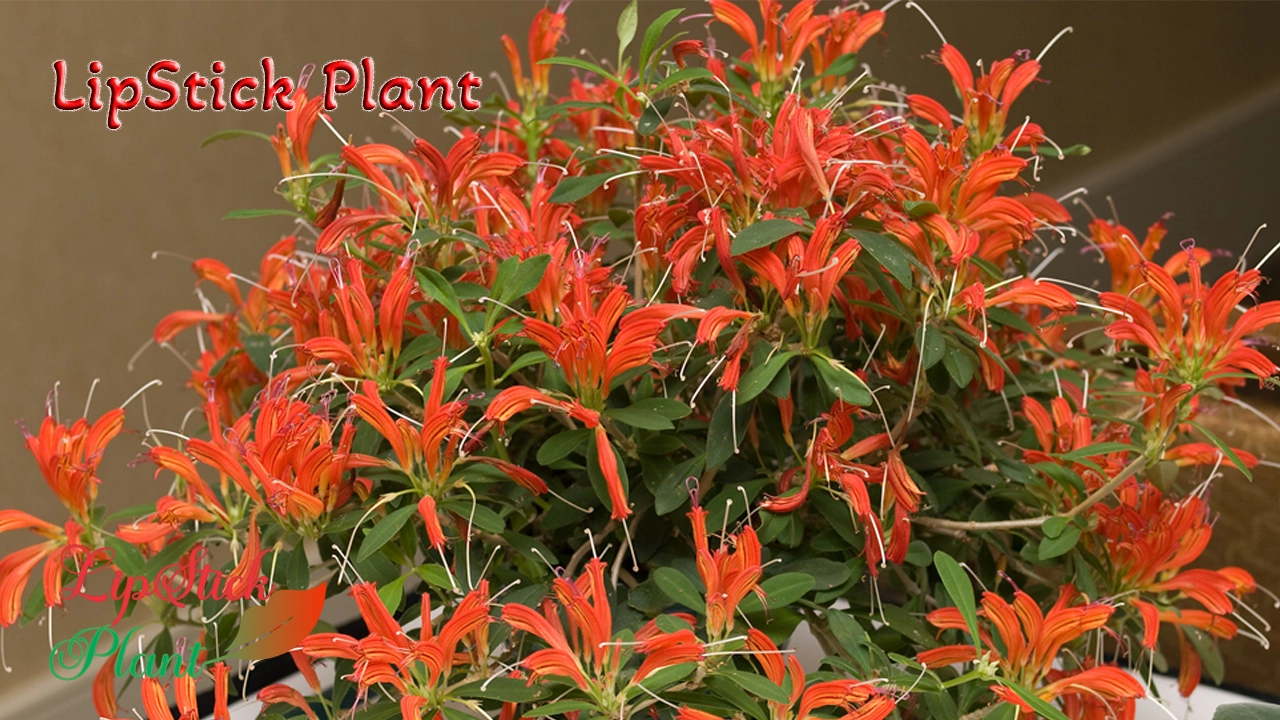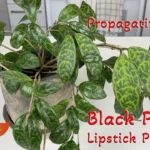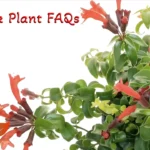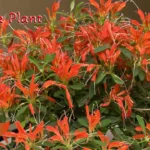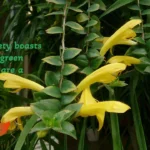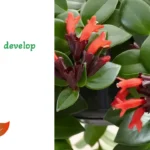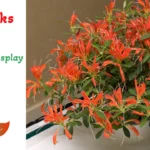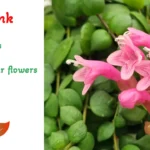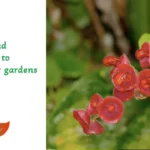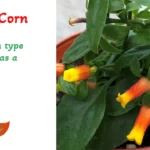If you’re looking for an exotic houseplant to add a splash of tropical charm to your indoor space, a Lipstick Plant is an excellent choice. With its stunning blooms and easy care requirements, this flowering vine plant is becoming increasingly popular among plant enthusiasts.
Whether you’re a seasoned gardener or just starting, our comprehensive guide will provide you with everything you need to know about growing and caring for a Lipstick Plant. You’ll learn about different Lipstick Plant varieties, optimal lighting and watering conditions, as well as potential issues to look out for. Armed with these top tips, you can confidently care for your Lipstick Plant and enjoy its vibrant beauty all year round.
Key Takeaways:
- Lipstick Plants are exotic houseplants that add a tropical touch to indoor spaces.
- They are flowering vine plants that are easy to care for, making them an ideal choice for both beginner and experienced gardeners.
- To ensure your Lipstick Plant grows and blooms healthily, it’s important to provide the optimal lighting, watering, and fertilization conditions.
- Propagating Lipstick Plants is a rewarding process that allows you to expand your plant collection.
- If you encounter any issues while caring for your Lipstick Plant, it’s essential to troubleshoot and address them promptly to prevent potential damage.
Introduction to Lipstick Plants
Welcome to the world of exotic houseplants! If you’re looking for a tropical indoor plant to spice up your living space, look no further than the Lipstick Plant. This hanging vine plant boasts vibrant red or pink blooms that resemble tiny tubes of lipstick, giving it its unique name. The Lipstick Plant is native to Southeast Asia, where it thrives in humid, tropical climates. It’s no wonder why this easy-to-care-for plant is a popular choice among plant enthusiasts worldwide.
Lipstick Plant Varieties
There are several Lipstick Plant varieties available in the market, each with unique characteristics and features. Here are some of the most popular Lipstick Plant varieties:
| Variety | Description |
|---|---|
| Aeschynanthus radicans | The classic Lipstick Plant variety with long, vine-like stems and bright red tubular flowers. |
| Aeschynanthus pulcher | A compact Lipstick Plant variety with small leaves and bright red flowers, perfect for smaller indoor spaces. |
| Aeschynanthus marmoratus | A unique Lipstick Plant variety with marbled leaves and clusters of orange-red flowers. |
| Aeschynanthus speciosus | A Lipstick Plant variety with large, dark green leaves and brilliant red flowers that bloom profusely. |
| Aeschynanthus longicaulis | An elegant Lipstick Plant variety with long, trailing stems and delicate orange-red flowers. |
When choosing a Lipstick Plant variety, consider your space, lighting conditions, and personal preferences. If you have limited space, a compact variety like Aeschynanthus pulcher may be a better option. If you prefer a larger plant with bold blooms, Aeschynanthus speciosus may be the perfect choice.
Lipstick Plant Care Tips
Caring for your Lipstick Plant is essential to ensure it thrives in your home. Follow these lipstick plant care tips for the best results:
1. Light Requirements
Lipstick Plants prefer bright but indirect light. Too much direct sunlight can damage the leaves, while too little light can prevent flower growth. Place your plant near a window that receives bright indirect light, or use a sheer curtain to filter direct sunlight.
2. Watering Techniques
Water your Lipstick Plant once the top inch of soil has dried out, and never let it sit in water. Overwatering can lead to root rot, while underwatering can cause the leaves to wilt. The frequency of watering depends on factors like temperature, humidity, and soil composition.
Tip: Use room temperature water to prevent shocking the roots.
3. Soil Requirements
Lipstick Plants require well-draining soil that retains moisture without becoming waterlogged. A mixture of peat moss, perlite, and vermiculite is a good option.
4. Humidity Levels
Lipstick Plants are tropical plants that thrive in humid environments. To replicate their natural habitat, mist your plant regularly and use a humidifier or pebble tray to increase the humidity around it.
5. Fertilization
Use a balanced, water-soluble fertilizer every two weeks during the growing season to promote blooming and growth. Avoid over-fertilizing, as this can burn the roots.
6. Pruning
Regular pruning helps keep your Lipstick Plant in shape and promotes bushier growth. Trim back any leggy or damaged stems, and pinch off spent blooms to encourage new growth.
By following these lipstick plant care tips, you’ll be able to enjoy the vibrant blooms and exotic appeal of your Lipstick Plant.
Choosing the Right Pot and Soil
When selecting a pot for your Lipstick Plant, it’s essential to consider both the size of the plant and the drainage requirements. Choosing a pot that’s too small can restrict root growth and lead to stunted growth, while a pot that’s too large can cause overwatering and root rot. A pot with drainage holes is also crucial to prevent water from sitting at the bottom, leading to root rot.
The ideal soil for a Lipstick Plant is a well-draining, organically rich mix that retains moisture without becoming waterlogged. A mix of peat moss, perlite, and vermiculite or sand is recommended. Avoid heavy clay soils that can hold water for too long, leading to root rot.
When repotting your Lipstick Plant, gently loosen the roots and remove any dead or damaged roots. Place the plant in the new pot, filling it with fresh potting soil and ensuring that the soil level is the same as before. Water the plant thoroughly, allowing the excess water to drain out of the pot.
Lighting Requirements for Lipstick Plants
Lipstick Plants have specific lighting requirements that should be met to promote healthy growth and blooming. These plants prefer bright, indirect light, so placing them near an east or west-facing window is ideal. However, it’s important to avoid direct sunlight as this can scorch the leaves and damage the plant.
If your home doesn’t receive a lot of natural light, don’t worry! Lipstick Plants can also thrive in lower light environments such as north-facing windows or artificial light sources, as long as they receive at least 6 hours of light per day. Supplemental grow lights can also be used to provide the necessary light requirements.
Avoid placing Lipstick Plants in a drafty location or near HVAC vents, as this can cause stress to the plant and negatively impact its growth and blooming.
Watering and Humidity
Proper watering and humidity are essential for a healthy Lipstick Plant. Overwatering can lead to root rot, while underwatering can result in dehydration and wilting.
It’s important to keep the soil evenly moist but not soggy. A good way to check if your plant needs water is by sticking your finger about an inch into the soil. If it feels dry, it’s time to water.
Additionally, maintaining optimal humidity levels is crucial for the well-being of your Lipstick Plant. These tropical plants thrive in high humidity, so it’s important to keep the air around them moist.
You can increase humidity levels by misting your plant regularly or placing a tray of water near the plant. You can also use a humidifier to maintain the ideal level of moisture in the air. Remember to always use room temperature water and avoid letting your plant sit in standing water, as this can cause root rot.
Fertilizing Lipstick Plants
Fertilizing your Lipstick Plant is an important aspect of keeping it healthy and promoting blooming. Here are some tips to fertilize your Lipstick Plant:
Frequency
Lipstick Plants require a balanced fertilization plan. During the growing season (spring and summer), fertilize your plant once every two weeks. In winter, reduce fertilization to once a month.
Type of Fertilizer
Use a balanced houseplant fertilizer that contains equal parts of nitrogen, phosphorus, and potassium (N-P-K). Alternatively, you can use a fertilizer specifically formulated for flowering plants. Dilute the fertilizer to half strength and apply it to your plant during its regular watering schedule.
Over-Fertilization
Be mindful not to over-fertilize your Lipstick Plant, as this can lead to burned roots or foliage and ultimately harm your plant. Signs of over-fertilization include leaf yellowing, stunted growth, and wilting.
Under-Fertilization
When under-fertilized, Lipstick Plants may exhibit slow growth and yellowing leaves. In some cases, your plant may not bloom. To prevent under-fertilization, follow the recommended fertilization schedule and frequency.
By following these fertilizer tips, you can ensure your Lipstick Plant stays healthy and vibrant, delighting you with its striking beauty for years to come.
Common Lipstick Plant Problems
Despite being a relatively easy plant to care for, Lipstick Plants can encounter some issues, including:
- Fungal and bacterial diseases: These may arise from overwatering, poor air circulation, or high humidity levels. To avoid these issues, ensure adequate drainage, avoid misting and overcrowding, and maintain proper humidity levels.
- Yellowing leaves: This can be caused by underwatering, overwatering, or insufficient light. Check the soil moisture levels and adjust watering frequency, ensure adequate drainage, and consider moving your Lipstick Plant to a spot with brighter indirect light.
- Wilting blooms: This may occur due to insufficient light or heat stress. Check the lighting conditions and adjust as necessary. If your plant is exposed to direct sunlight, consider moving it to a spot with bright indirect light to avoid heat stress.
- Pests: Common pests that may infest your Lipstick Plant include spider mites and mealybugs. Regular cleaning and inspection can help prevent infestations. If an infestation is present, apply insecticidal soap or neem oil to control the problem.
By keeping an eye out for these common problems and taking appropriate measures to prevent or address them, you can maintain a healthy and thriving Lipstick Plant.
Propagating Lipstick Plants
Propagating your Lipstick Plant is a fun and rewarding way to expand your plant collection. This tropical houseplant is relatively easy to propagate, and you have two main methods to choose from: stem cuttings or division.
Propagation by Stem Cuttings
To propagate by stem cuttings:
- Choose a healthy, non-flowering stem from your Lipstick Plant that is at least 4-6 inches long and has several leaves attached to it.
- Cut the stem just below a leaf node, and remove the lower leaves, leaving only a few at the top.
- Place the cutting in water or soil, and keep it moist in a warm, bright location. New roots should begin to develop within a few weeks.
- Once roots have formed, you can transplant your new Lipstick Plant into a pot with well-draining soil and care for it as you would a mature plant.
Propagation by Division
To propagate by division:
- Choose a healthy, mature Lipstick Plant that has multiple stems growing from the base of the plant.
- Gently remove the plant from its pot, being careful not to damage the roots.
- Separate the plant into smaller sections, each with at least one stem and a healthy root system.
- Plant each section in a new pot with fresh soil and care for them as you would a mature plant.
Remember to keep your new Lipstick Plants in a warm, bright location with proper watering and care to ensure their successful growth and development.
Congratulations on becoming a Lipstick Plant expert! With the knowledge and techniques you’ve learned in this guide, you can now confidently grow and care for a healthy and vibrant Lipstick Plant in your indoor space.
Remember to apply the tips and practices we’ve discussed throughout this guide to provide your Lipstick Plant with the optimal growing conditions, from choosing the right pot and soil to understanding its lighting and watering needs. With proper care, your Lipstick Plant will reward you with stunning blooms and exude a tropical charm in your home.
Don’t forget to propagate your Lipstick Plant to expand your plant family and share the beauty of this exotic houseplant with your friends and family.
Thank you for reading our guide on how to grow lipstick plants. We hope you found it helpful and informative. Happy growing! Visit Varieties Page
